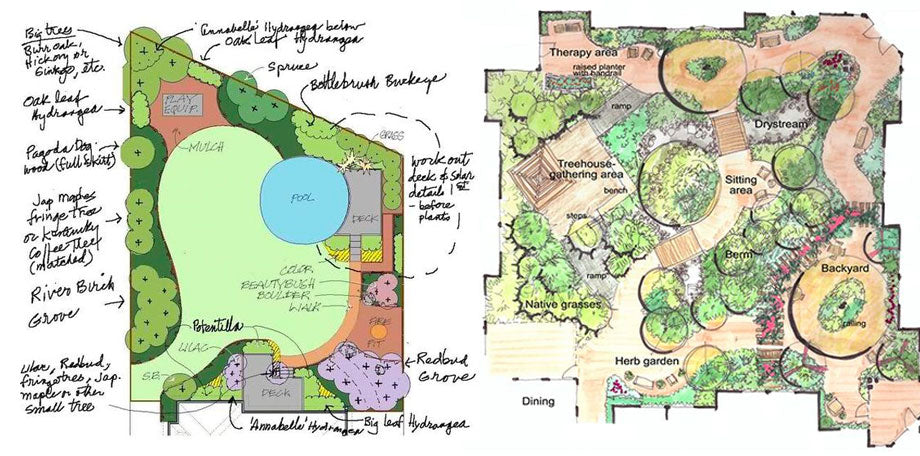How To Keep Your Garden Organised
But as we all know, sometimes it's easier said than done. Even the most untidy and disorganised gardens can be transformed into a functional, practical and organised space with a little bit of imagination and planning.
Sketch Out Your Ideal Garden Layout
The easiest thing to do when considering your outdoor garden layout is sketching out all your needs by drawing areas - often helped with structural elements such as screens, trellis, flowerbeds, raised beds, or border edging.
This will produce distinct zones, like a child-friendly area, a dining or fire pit area for entertaining, a reading corner, or even a tranquil workspace. You can also incorporate comfortable seating for socialising and a summerhouse for when it rains, but also add tall foliage for contrast, select hardy grasses and evergreen plants for low-maintenance care.

Create Areas in Your Shed or Greenhouse
Try organising your greenhouse or shed by labelling each box or shelf or by hanging bold printed signs above each area. Think about the main areas you’d like to create such as a planting area, a tool storage area, a worktop area for potting or taking cuttings, and somewhere for storing seeds, fertilisers and small equipment.

Keep Watering & Feeding Equipment At Reach
Think about ways to organise your equipment smartly - it makes sense to keep the watering and feeding equipment near your garden backdoor for example, so that you can take a watering can out easily in order to fill it from an outside tap.
Create A Schedule For Planting
Plants require certain conditions in order to thrive. Some will only grow in warm, tropical environments while others can live in quite cold temperatures. It's important to plant depending on the season and climate you live in. Create a calendar or schedule that maps out when to plant certain flowers (or use the Royal Horticultural Society crop planner template), shrubs or vegetables and where you will place them - use plant labels in places to help you remember your new species.
Build Raised Garden Beds
Raised beds are ideal for many vegetable gardens, providing a neat and tidy look even if weeding is still needed. Alternatively, container gardening also offers great benefits for veggie patches, as it allows for control of plant growth and a longer season, all with no weeding required.

Utilise Walls, Floors & Shelf Spaces
You may only have space for a few areas, but by utilising your shed walls, floor and shelf spaces it is surprising how much room you can find – a two tier storage rack is a great asset in even the smallest space!











